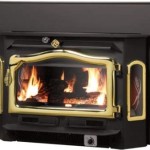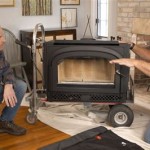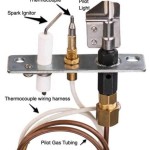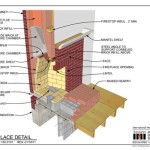In-Wall Fireplace Ideas: Integrating Warmth and Design
In-wall fireplaces represent a modern approach to incorporating a traditional focal point into a contemporary living space. Unlike traditional fireplaces that protrude into a room, in-wall models are designed to be flush with the wall surface, offering a sleek, streamlined aesthetic. This design choice not only conserves valuable floor space but also provides a canvas for incorporating various design elements and technological advancements into the fireplace itself. The integration of an in-wall fireplace requires careful planning and execution, considering structural requirements, venting options, and aesthetic preferences to achieve a harmonious blend of warmth and visual appeal.
The versatility of in-wall fireplaces lies in their adaptability to diverse architectural styles. From minimalist apartments to expansive, modern homes, these fireplaces can be tailored to suit the specific needs and design sensibilities of the homeowner. This article will explore various in-wall fireplace ideas, examining their design considerations, installation requirements, and the different fuel types that can be utilized to create a functional and visually stunning centerpiece in any room.
Key Design Considerations for In-Wall Fireplaces
The design of an in-wall fireplace involves a multifaceted approach, encompassing visual appeal, functionality, and adherence to safety regulations. Several key design elements must be considered to ensure a successful and aesthetically pleasing integration. These include framing and finishing materials, the dimensions of the fireplace opening, and the surrounding architectural elements that will complement the overall design.
Framing materials are critical in defining the aesthetic of the fireplace. Options range from traditional wood framing to contemporary metal framing, each offering a distinct visual character. Wood framing provides a warm, classic feel, while metal framing contributes to a more modern and industrial aesthetic. The choice of framing material should align with the overall design theme of the room and the chosen fuel type. For example, if a gas fireplace is chosen, the framing materials must adhere to specific heat-resistant standards.
Finishing materials play an equally important role in the fireplace's visual impact. Options include stone, brick, tile, and plaster, each providing a unique texture and color palette. Stone and brick offer a rustic, natural look, while tile and plaster provide a more refined and contemporary appearance. The selected finishing material should complement the framing material and the surrounding wall color to create a cohesive design. Additionally, the texture of the finishing material can be used to create visual interest and depth.
The dimensions of the fireplace opening are directly related to the size of the room and the desired visual impact. A larger fireplace opening can serve as a dramatic focal point in a spacious living room, while a smaller opening may be more appropriate for a cozy bedroom or study. The dimensions should be proportional to the size of the wall and the surrounding furniture to maintain visual balance. Moreover, the dimensions must be carefully considered in relation to the fuel type and venting requirements of the fireplace.
The integration of the fireplace with surrounding architectural elements is crucial for achieving a seamless and harmonious design. The fireplace should be incorporated into the existing wall structure in a way that appears natural and intentional. This may involve modifying the wall to accommodate the fireplace unit or incorporating design elements that visually connect the fireplace to the surrounding walls and ceiling. For example, a built-in niche above the fireplace can provide a space for displaying artwork or decorative objects, further integrating the fireplace into the room's design.
Fuel Type Options and Venting Considerations
The selection of a fuel type for an in-wall fireplace is a significant decision that impacts both the aesthetic and functional aspects of the design. The most common fuel types include wood, gas, and electricity, each offering distinct advantages and disadvantages. Furthermore, the chosen fuel type will dictate the venting requirements of the fireplace, which must be carefully considered during the design and installation process.
Wood-burning fireplaces offer a traditional and authentic experience, providing the ambiance of a real fire and the aroma of burning wood. However, wood-burning fireplaces require a chimney for venting smoke and combustion gases, which can be a significant structural consideration, especially in existing homes. Additionally, wood-burning fireplaces require a constant supply of firewood and regular cleaning to remove ashes and soot. Despite these challenges, the appeal of a wood-burning fireplace remains strong for those seeking a classic fireplace experience.
Gas fireplaces offer a convenient and cleaner alternative to wood-burning fireplaces. They can be fueled by natural gas or propane and can be easily turned on and off with the flip of a switch or the touch of a button. Gas fireplaces produce minimal smoke and ash, reducing the need for frequent cleaning. Venting options for gas fireplaces include direct vent, vent-free, and B-vent systems. Direct vent systems are the most efficient and safest option, as they draw combustion air from outside the home and exhaust combustion gases directly to the outside. Vent-free systems do not require a chimney or vent, but they are subject to certain restrictions and may not be suitable for all homes.
Electric fireplaces offer the simplest and most versatile installation option. They do not require a chimney or vent and can be plugged into a standard electrical outlet. Electric fireplaces use electricity to generate heat and simulate the look of flames. They are available in a wide range of styles and sizes, from small, portable units to large, built-in models. While electric fireplaces do not provide the same authentic experience as wood-burning or gas fireplaces, they offer a convenient and cost-effective way to add warmth and ambiance to a room. The aesthetic improvements in electric fireplaces in recent years have made them a more viable option for homeowners seeking ease of use and installation.
The venting requirements for each fuel type are crucial considerations during the design and installation process. Proper venting ensures the safe and efficient operation of the fireplace and prevents the buildup of harmful gases inside the home. Wood-burning fireplaces require a properly sized chimney that meets local building codes. Gas fireplaces may require a direct vent, B-vent, or vent-free system, depending on the model and local regulations. Electric fireplaces do not require any venting.
Integrating Technology and Modern Features
Modern in-wall fireplaces can be enhanced with various technological features and smart home integrations to provide greater control, convenience, and safety. These features can range from remote control operation and programmable thermostats to smart home connectivity and advanced safety sensors. The integration of technology can significantly enhance the user experience and make the fireplace a more integral part of a modern living space.
Remote control operation allows users to control the fireplace from anywhere in the room, adjusting the flame height, temperature, and other settings with ease. Some remote controls also include programmable thermostats, which allow users to set the fireplace to automatically turn on and off at specific times or temperatures. This feature can help to conserve energy and maintain a comfortable indoor environment.
Smart home connectivity allows users to control the fireplace using their smartphone or other smart devices. This integration allows for remote monitoring and control, even when the user is not at home. Users can adjust the settings, check the status of the fireplace, and receive alerts in case of any issues. Smart home integration can also be used to integrate the fireplace with other smart home devices, such as lighting and HVAC systems, to create a unified and automated home environment.
Advanced safety sensors can be integrated into in-wall fireplaces to enhance safety and prevent potential hazards. These sensors can detect carbon monoxide levels, gas leaks, and other dangerous conditions, and automatically shut off the fireplace if any issues are detected. Some fireplaces also include tip-over sensors, which will automatically shut off the fireplace if it is accidentally knocked over. These safety features provide added peace of mind and ensure the safe operation of the fireplace.
Another modern feature is the incorporation of LED lighting within or around the fireplace. This can be used to highlight the flames, create a decorative ambiance, or provide supplemental lighting in the room. LED lighting is energy-efficient and long-lasting, and it can be easily customized to match the desired aesthetic.
Finally, some in-wall fireplaces can be integrated with media centers and entertainment systems. This can involve concealing the fireplace behind a retractable screen or integrating it with a built-in entertainment unit. This integration allows for a seamless and streamlined look, combining the warmth and ambiance of a fireplace with the functionality of a modern entertainment system.

13 Stunning Fireplace Accent Wall Ideas For Your Home Carla Bast Design

Electric Fireplace Gallery Touchstone Home S Inc

How To Build A Diy Electric Fireplace Wall Reveal Thrifty Decor And Organizing
:strip_icc()/102645634_preview-95ff58af794c4439add0f23edc2cfac4.jpg?strip=all)
25 Modern Fireplace Ideas For Every Design Style

10 Decorating Ideas For Wall Mounted Fireplace Make Your Space Unique

10 Decorating Ideas For Wall Mounted Fireplace Make Your Space Unique

Living Room Fireplace Home Decor Farm House

13 Stunning Fireplace Accent Wall Ideas For Your Home Carla Bast Design

101 Reclaimed Wood Fireplace Surround Ideas Decoratoo Accent Walls In Living Room Feature Wall Tv
:max_bytes(150000):strip_icc()/SPR-fireplace-decor-ideas-6835047-hero-ea550ec42ad1497e96f2d0cf9667aa67.jpg?strip=all)
57 Fireplace Decor Ideas That Will Warm Your Hearth
Related Posts








